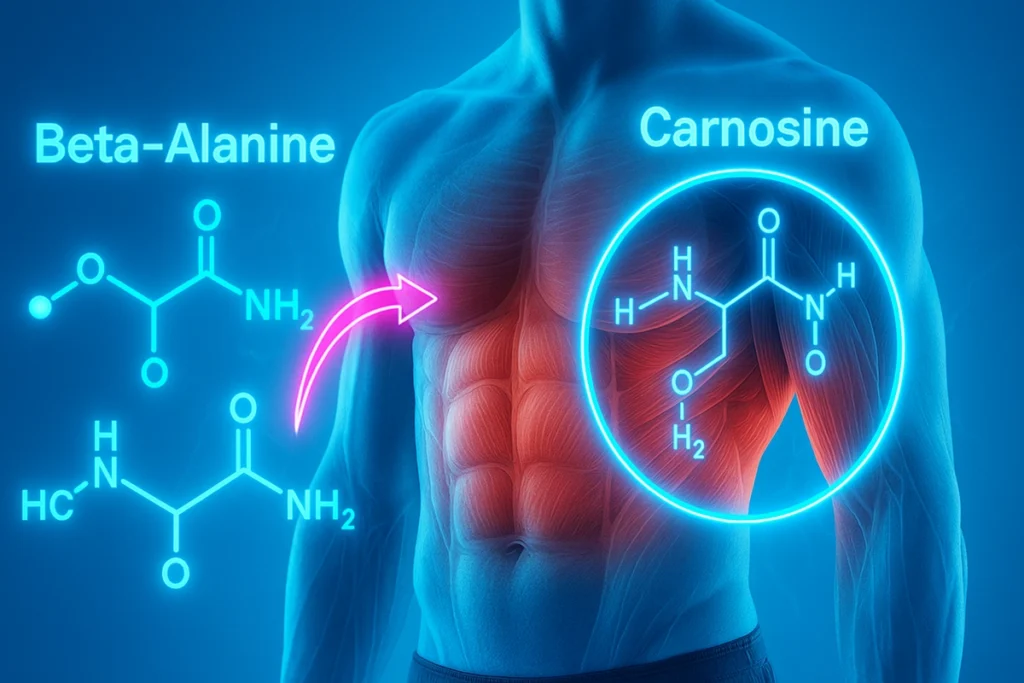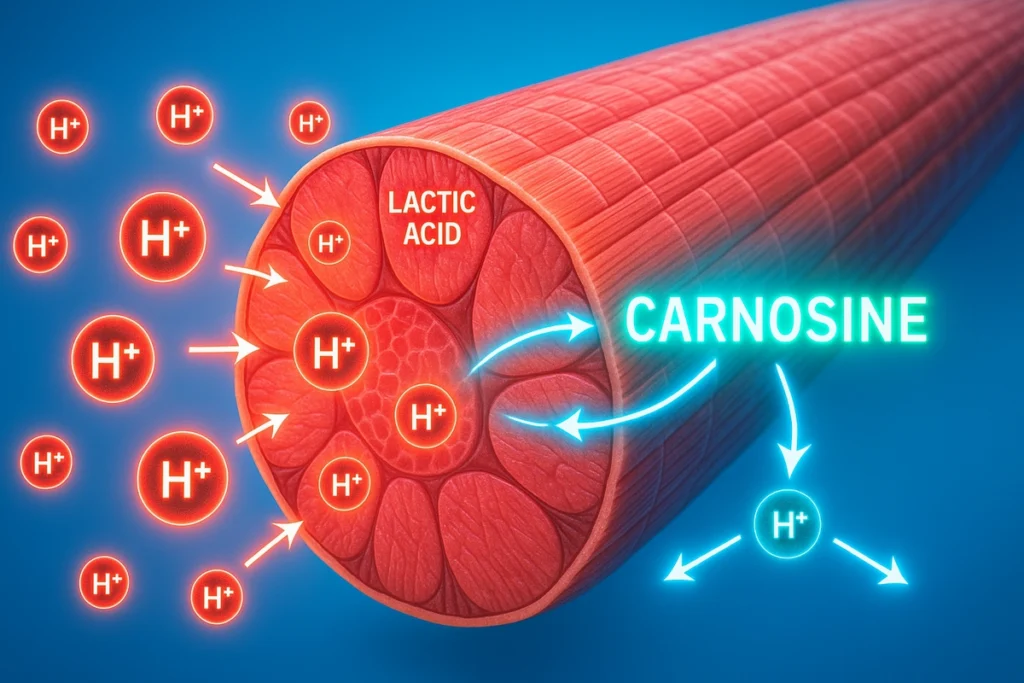Looking for a supplement that helps you crush more reps, last longer in your workouts, and delay muscle fatigue?
The secret weapon could be beta-alanine—and it works best when paired with carnosine.
This powerful duo helps your muscles fight off that burning sensation during intense training.
Whether you’re into weightlifting, CrossFit, or endurance sports, understanding how beta-alanine and carnosine work together can give you a serious edge.
In this article, I’ll break down the science, share real coaching experiences, and show you exactly why this combination is worth your attention.
Table of contents
Introduction: Why This Combo Matters

If you’re pushing through high-rep sets, intense circuits, or endurance sessions, you’ve probably hit that burning wall—the one where your muscles scream “enough!”
That burn? It’s caused by lactic acid buildup. And here’s where beta-alanine and carnosine step in as your muscle-saving tag team.
Beta-alanine boosts carnosine levels in your muscles, and carnosine acts like a buffer against acid buildup. Together, they help delay fatigue, increase endurance, and keep you performing at your peak—whether you’re cutting, bulking, or just grinding through another leg day.
For a deeper look at how to use beta-alanine consistently, check out the Beta-Alanine Daily Use Guide.
How Beta-Alanine Boosts Carnosine Levels

Carnosine is a naturally occurring compound in your muscle cells, but it doesn’t just appear out of nowhere.
It’s formed when beta-alanine (a non-essential amino acid) combines with histidine. While histidine is abundant in your body, beta-alanine is usually the limiting factor—meaning supplementing with it can significantly raise your muscle carnosine levels.
From my personal experience, once I started taking beta-alanine consistently, I felt more resilient in my workouts.
For example, during supersets on push days, I wasn’t as drained by the third round. That was a huge shift for me.
If you’re wondering whether to take it alone or with pre-workout, here’s a comparison: Beta-Alanine vs. Pre-Workout.
Carnosine’s Role in Muscle Performance

Carnosine works by buffering the hydrogen ions (H+) that accumulate in your muscles during high-intensity efforts.
These ions lower pH levels, leading to that painful muscle burn and eventually forcing you to stop.
With higher carnosine levels, your muscles stay in the fight longer.
I’ve seen this firsthand not just in myself but in clients too.
One of my athletes, James from Canada, added beta-alanine before prepping for a Spartan Race. He said the uphill sprints felt way more manageable after just a few weeks on it.
And yes, it’s even beneficial on non-training days: Should You Take Beta-Alanine on Rest Days?
Scientific Evidence Behind the Synergy

Research backs up what I and many others have experienced.
Multiple studies show that 4–6 weeks of beta-alanine supplementation can increase muscle carnosine by up to 80%.
This directly translates to better muscular endurance, improved time to exhaustion, and reduced perceived fatigue.
Personally, I noticed the effects around week 3–4.
During leg workouts, my walking lunges went from 10 reps to 13 reps without upping the weight—just better muscular endurance from beta-alanine and carnosine working together.
Want to use it for running? Here’s a full guide: Beta-Alanine for Runners
Who Should Use Beta-Alanine Supplements?

If you’re someone who does:
- High-rep hypertrophy sets
- HIIT, CrossFit, or circuit training
- Endurance-based sports (like obstacle races or running)
…then beta-alanine is for you.
I had another client, Luis from Brazil, who was on a cutting phase.
His energy usually dropped by set three. After introducing beta-alanine, he maintained workout intensity longer and preserved more lean mass.
Women can benefit just as much too. Read more here: Beta-Alanine for Women Training
Side Effects and Practical Tips

Let’s talk side effects—because they’re real.
The most common one? A tingling sensation on your skin, called paresthesia.
I got it too, especially on my face and hands during the first week. It’s harmless but a bit weird at first.
To avoid it, I split my daily dose into 2–3 servings. It worked perfectly and made it easier to stay consistent.
For a full breakdown of that tingling effect, check this out: Beta-Alanine Tingling Explained
Stacking beta-alanine with other performance supplements also helps.
I’ve used it alongside creatine monohydrate and citrulline malate, and the combo improved both my strength and endurance without any crash.
If you’re considering this combo, read this comparison: Beta-Alanine vs Creatine for Strength and Power
Also, many users ask about loading. My take? It’s optional but helpful: Beta-Alanine Loading Phase Guide
Final Verdict: Is Beta-Alanine Worth It for Carnosine Boosting?

Absolutely—if you’re serious about performance and muscle endurance.
Beta-alanine may not give instant gratification like caffeine, but with consistent use, the carnosine boost delivers real results where it counts: longer sets, stronger finishes, and less mid-set burnout.
Whether you’re a lifter chasing more reps or an athlete running against the clock, beta-alanine is a smart addition to your supplement stack.
Stick with it for at least 4–6 weeks, split your doses, and watch your performance shift.
Like I always tell my clients—it’s not about pushing harder once, but pushing further every time.



Leave a Reply